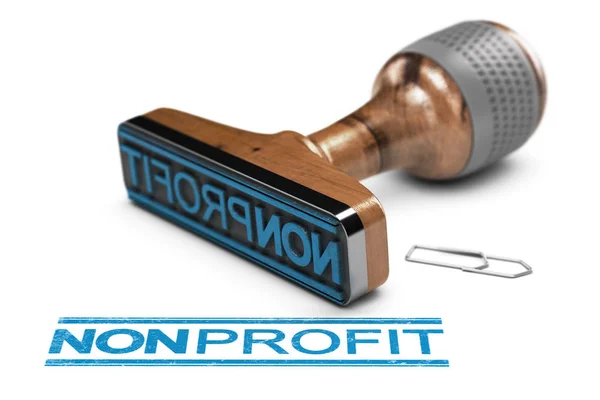5 Video Tips to Rock Nonprofit Storytelling
For fundraisers, a compelling video is a critical way to incite action. This powerful tool cuts through noise and clutter and grabs attention. Videos can showcase your impact in a way that deepens your connection with current and potential donors.
You’ve likely even noticed that your video content tends to outperform other types of posts on social media. People love video content for its digestibility, especially when it’s accessed from a mobile device.
To help you create a regular cadence of video content for donors and potential supporters, here are five practical tips. With these things in mind, you can create video that builds your relationships and helps you to raise even more funding.
1. Tell Inspiring Stories about your Nonprofit
It’s not hard to understand why nonprofit storytelling is so popular—it’s how we communicate as humans! Research studies have found that personal stories and gossip make up 65 percent of our daily conversations. When coupled with the viral and attention-getting potential of video, storytelling remains the most compelling and engaging type of online content out there for nonprofits.
Nothing can compete online with a well-told story in video format. The statistics don’t lie: four times as many people would rather watch a video about a product or service than read about it. Video is the most engaging form of online content across all social media channels. Online Americans are exposed to more than 100,000 digital words daily. 92 percent of these consumers would prefer to consume those words in storytelling form.
Nonprofits that do well in this department often share a mix of long-form, professionally shot and edited videos. Also add in-the-moment snapshots about their work in the field.
To collect stories on video, it can help to think like a marketer. Consider all of the events and happenings on your community’s radar (including your own). This can help determine what video clips you can capture to augment the story for your larger audience.
2. Grab Attention
After creating your video, be sure to directly upload the video to each individual social media platform. Based on our own experience working with several dozen nonprofits on social media best practices, this tactic is considerably more effective than posting an outside link to the video. When you directly upload a video and share it to social media your video will automatically start playing when it comes up in the newsfeed or update stream.
Because videos play automatically but silently until the viewer clicks on them, you need to grab attention visually in that first frame. Consider what you can do to entice people to click on the sound button and watch the full video.
3. Bring People “Behind the Scenes” of your Nonprofit
How can your organization bring people into your “backyard” using video? How can you make them feel special and more connected to your organization? The answer: showcase your organization’s personality.
Post brief, behind-the-scenes videos of your organization at work. Don’t worry if it’s not professionally produced. All you need is a camera or smartphone and a steady hand.
Nonprofits of all sizes can post videos of the small things they do every day. Answering questions from visitors or people on the phone, planting a tree, giving away toys, or helping with homework. Events happening right outside the office doors or in the community are also fodder for short, in-the-moment videos.
4. Nonprofit Showing Impact
Your donors made the decision to give money to your organization. This imparts a responsibility on your nonprofit to use the money wisely and responsibly and to communicate the results you achieve. Storytelling with video provides an intimate way to communicate impact and show potential donors and supporters that your organization is a good steward of funds.
When you use video to showcase real stories from real people who have benefited from your work, it helps supporters connect with your cause. Along with showcasing impact, you can use video to thank and acknowledge donors and supporters in a more personal way. Whether they donate to a particular campaign, help you reach a fundraising goal, or attend an event. Consider how video can help deliver thanks in a way that delights.
5. Use a Mix of Amateur and Professional
There are two main categories of nonprofit video: amateur and professional.
Professional videos are generally longer in length and formally staged and shot. These videos involve significant preparation and are created by a professional videographer or filmmaking studio. It will usually incorporate smooth edits, transitions, voice-overs, music, and more. Professional, longer-form videos are best used at gala fundraising events. Also on your YouTube channel, in your major gift solicitation materials, and on the donate page of your website.
Amateur videos are created by staff members, volunteers, clients, and other stakeholders—people without formal experience or training. These videos work best on social media channels where short (thirty seconds or less), spontaneous videos rule.
With the proliferation of smartphones, video cameras, and micro-video apps such as Snapchat and Instagram, we all have the capability to be mini filmmakers. No matter your budget, your staff capacity, or your technical knowledge, your nonprofit can use this to share and connect.
Conclusion
Whether professional or amateur videos will be more effective for your nonprofit will depend on your marketing goals, budget, and audience. In our experience, on social media, people will not watch a long, five-minute video on the history of your organization. They often will not even watch a thirty-second video all the way through.
It is certainly true that in the digital space, people gravitate toward authentic, emotional stories from real people in a shorter, more informal format. However, I do advise incorporating some long-form video with your short, in-the-moment video content. Long-form video is best used on YouTube and Vimeo. Users are accustomed to watching longer videos, and they often stay to watch multiple videos at a time. Your nonprofit could also use long-form video content on your blog and during your events, to tell a more complete story and give a clear picture of your impact and your work.
Still have a few questions about adding video to your marketing strategy?
Schedule a Discovery Session to see how our talents can match your vision.




